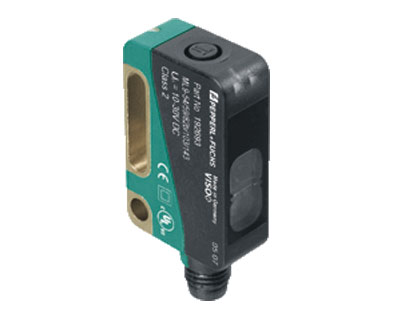Photoelectric switch terminology explanation complete
Photoelectric switch terminology explanation complete
①Detection distance: It refers to the spatial distance from the reference position (sensing surface of photoelectric switch) to the detection surface measured when the switch is moved in a certain way. The rated operating distance refers to the nominal value of the operating distance of the proximity switch.
②Return distance: the absolute value between the action distance and the reset distance.
③Response frequency: the number of cycles that the photoelectric switch is allowed to operate within the specified 1s time interval.
④ Output status: divided into normally open and normally closed. When there is no detection object, the load connected by the normally open photoelectric switch will not work due to the cut-off of the output transistor inside the photoelectric switch. When the object is detected, the transistor is turned on and the load is energized to work.
⑤Detection method: According to the different ways that the light emitted by the transmitter is folded back to the receiver when the photoelectric switch detects the object, it can be divided into diffuse reflection type, mirror reflection type, and through-beam type.
⑥ Output form: NPN two-wire, NPN three-wire, NPN four-wire, PNP two-wire, PNP three-wire, PNP four-wire, AC two-wire, AC five-wire (with relay), and DC NPN/PNP/normally open/normally closed multi-function Several commonly used output forms.
⑦Pointing angle: see the schematic diagram of the pointing angle of the photoelectric switch.
⑧Surface reflectivity: The light emitted by the diffuse reflection photoelectric switch needs to be reflected back to the receiver of the diffuse reflection switch through the surface of the test object, so the detection distance and the surface reflectivity of the test object will determine the intensity of the light received by the receiver. The intensity of the light reflected by the rough surface must be less than the intensity of the light reflected by the smooth surface, and the surface of the detected object must be perpendicular to the light emitted by the photoelectric switch. The reflectivity of commonly used materials is shown in Table 1.
Table 1 Reflectance of commonly used materials
Material reflectivity material reflectivity
White paper 90% opaque black plastic 14%
Newspaper 55% Black rubber 4%
Napkin 47% black fabric 3%
Carton cardboard 68% unpolished white metal surface 130%
Clean pine wood 70% gloss light-colored metal surface 150%
Clean rough wood 20% stainless steel 200%
Transparent plastic cup 40% cork 35%
Translucent plastic bottle 62% beer foam 70%
Opaque white plastic 87% of human palms 75%
⑨Environmental characteristics: The application environment of the photoelectric switch will also affect its long-term working reliability. When the photoelectric switch works in a state suitable for a large detection distance, because the optical lens will be stuck by the dirt in the environment, it will even be corroded by some strong acid substances, and its use parameters and reliability will be reduced. The simpler solution is to determine the suitable working distance according to the suitable large detection distance (Sn) derating of the photoelectric switch.
(3) Attention to the use of photoelectric switch
① The infrared sensor is a diffuse reflection type product, and the standard detection body used is flat white drawing paper.
②The infrared photoelectric switch can work stably under the condition of high environmental illumination, but in principle, it should be avoided that the optical axis of the sensor is directly facing the strong light source such as sunlight.
③The suitable small detectable width of the through-beam photoelectric switch is 80% of the lens width of the photoelectric switch.
④ When using inductive loads (such as lamps, motors, etc.), the transient inrush current is relatively large, which may degrade or damage the AC two-wire photoelectric switch. In this case, please use the AC relay to switch the load.
⑤The lens of the infrared photoelectric switch can be wiped with lens cleaning paper, and chemicals such as dilution solvents are prohibited to avoid permanent damage to the plastic lens.
⑥According to the actual requirements of users on site, under some severe conditions, such as dusty occasions, the sensitivity of the photoelectric switch produced has increased by 50% to adapt to the prolonged maintenance period of the photoelectric switch in long-term use. Claim.
⑦The products are all manufactured by SMD technology, and only leave the factory after passing strict tests, and will not be damaged under normal use. In order to avoid accidents, please check whether the wiring is correct before turning on the power, and whether the approved voltage is at the rated value.






